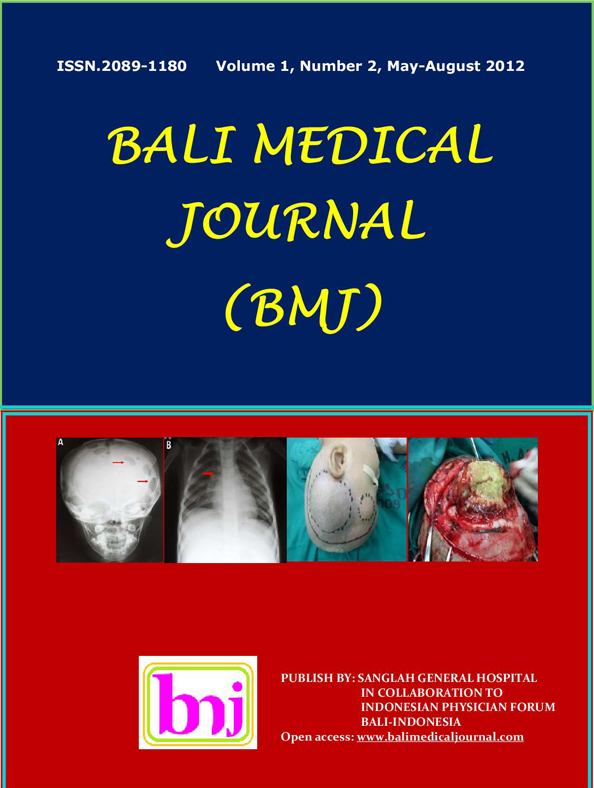Langerhans Cell Histiocytosis: A Case Report
Abstract
Objective: Langerhans Cell Histiocytosis (LCH) is a rare proliferative disorder of a distinct cell type that is similar to Langerhans cell. Prevalence is estimated at 1:200.000/year in children. Clinical presentations are variable, ranging from a single location in the bone to severe multivisceral involvement leading to dysfunction of vital organs. Therefore, objective of this study was to explore LCH based on clinical findings, skull x-ray, head CT-Scan, cytology, histopathology. and Immunohistochemistry.
Method: We report a case of Langerhans Cell Histiocytosis of a 3-year-old boy. Fine needle aspiration biopsy was performed from a nodule in parietal area on the scalp; dry fixation was made and stained with Giemsa. Immunohistochemistry examination was performed with CD1a and S100. Histopathology examination was done post-operatively and cytology examination were consistent with LCH, composing Langerhans cells with complex, clefted, grooved, irregular or convoluted nuclei with fine chromatins and one or more small nucleoli and moderate to abundant quantities of eosinophilic cytoplasm, mixed with multinucleated eosinophils.
Results: The finding of pentalaminar Birbeck granules by electron microscope is diagnostic of LCH, but this examination cannot be performed in our institution, so diagnosis was supported by immunohistochemistry with CD1a and S 100.
Conclusions: Based on clinical findings, skull x ray, Head CT-Scan, cytology, histopathology and Immunohistochemistry, this case was concluded as a Langerhans Cell Histiocytosis.


